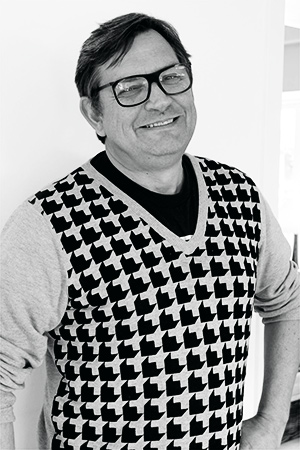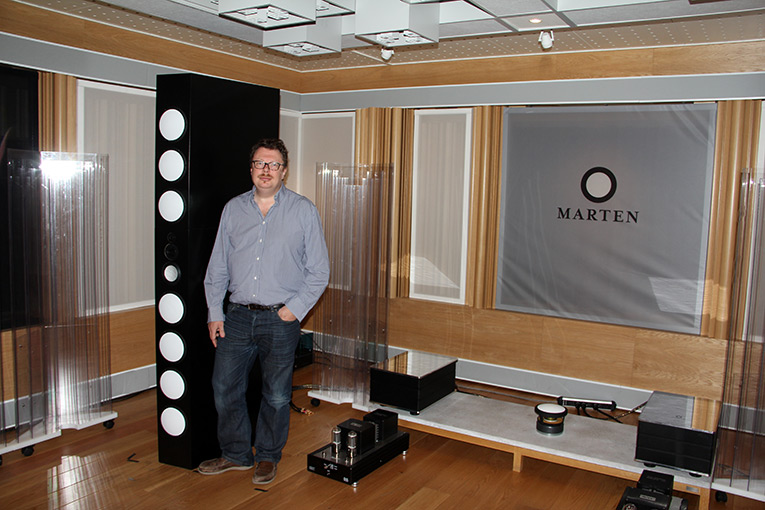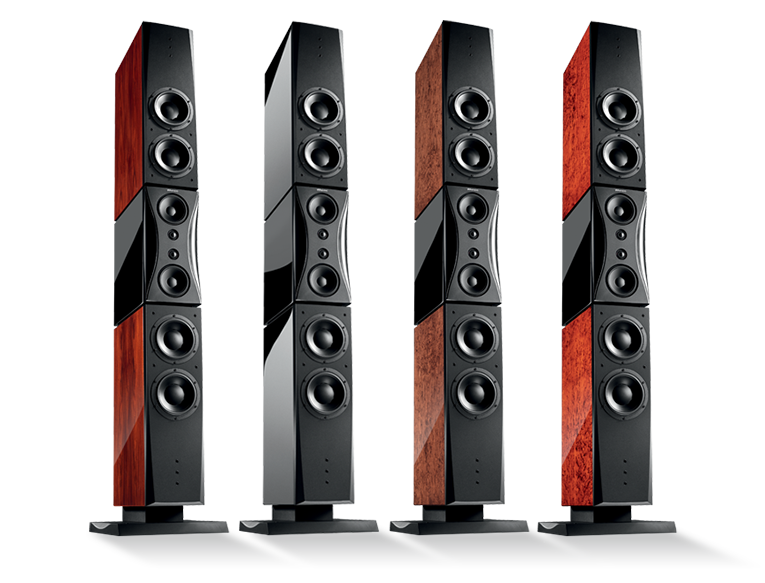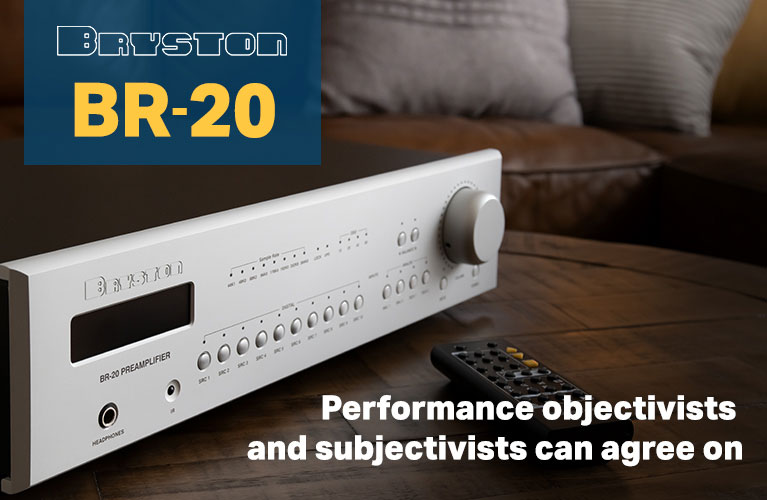 This is my first piece for SoundStage! Hi-Fi. I’ve written about hi-fi for over 25 years, first for the Danish-Swedish magazine High Fidelity, which for 12 years I partly owned. We buried the magazine late 2009 -- the global financial crisis killed off many Scandinavian niche magazines. I then started a Web magazine, nomono, also for Denmark and Sweden, and I write reviews for other publishers. For the Norwegian magazine Lyd og Bilde, a magazine published in all three Scandinavian countries in their respective languages, I mostly write about high-end gear. I’m a Swede who lives in Denmark and writes for a Norwegian publisher -- that’s Scandinavia for you.
This is my first piece for SoundStage! Hi-Fi. I’ve written about hi-fi for over 25 years, first for the Danish-Swedish magazine High Fidelity, which for 12 years I partly owned. We buried the magazine late 2009 -- the global financial crisis killed off many Scandinavian niche magazines. I then started a Web magazine, nomono, also for Denmark and Sweden, and I write reviews for other publishers. For the Norwegian magazine Lyd og Bilde, a magazine published in all three Scandinavian countries in their respective languages, I mostly write about high-end gear. I’m a Swede who lives in Denmark and writes for a Norwegian publisher -- that’s Scandinavia for you.
I ran into the SoundStage! Network’s Robert Jorgensen in the pressroom at this year’s Munich High End show. Robert is one of my former contributors, and we hadn’t seen each other in a few years. A really nice surprise meeting him -- he’s a very nice guy. He introduced me to Doug Schneider, and the talk soon drifted to my writing about the Scandinavian hi-fi scene.
“The Scandinavian scene?” you ask. ”Does anything really happen up there?” Well, for a start, it’s a vivid hi-fi industry with a high grade of ingenuity. That shouldn’t be surprising -- the industry has the Scandinavians to thank for both the loudspeaker and the tape recorder, to mention just two of the early inventions. I guess our climate leads us to indoor activities for most of the year, and our relatively high level of education lays a solid foundation for hi-fi studies. And since there’s also a big music industry and a lot of singing and playing going on, sound and music are big parts of our lives. There’s a lot of activity in the Scandinavian hi-fi industry, in the more affordable and the extreme high-end sectors, and in everything in between . . .
Recently, I’ve had some interesting encounters with two brand-new Scandinavian high-end loudspeakers. Expensive speakers. And huge! Marten’s enormous, four-part top model, the Supreme, has been on the market for a few years, and designer Leif Mårten Olofsson says it’s now time for a new version. A prototype of that new version was playing in the company’s showroom in Gothenburg, and Olofsson invited me to participate in a listening session there, so that I can later have the experience of comparing what I heard from the prototype with the finished production model. “I’m as far as I can get with the prototypes,” he said, “and I’m happy!”
Olofsson is entitled to be happy with the prototypes’ sound, and the incomparable music experience they provided. How a pair of speakers so physically huge could so totally disappear in the soundstage was almost magical. Air, presence -- everything you can imagine wanting was there. But, on the other hand, everything is exactly what you should demand when the price of a pair exceeds 3 million Swedish crowns (about $500,000 USD).
Much of Olofsson’s revision of the Supreme was devoted to limiting himself to a single cabinet per channel, eliminating the original’s separate bass towers. He’s therefore placed six slave bass units at the rear of the cabinet. The new Accuton convex elements at the front are also important ingredients that, according to Olofsson, have made it possible to take the sound quality to new heights. He’s already implemented the same type of element in a smaller new model, the Coltrane Tenor.
The new Supreme comprises six slaved bass units, six bass units (three on top and three on the bottom), an upper bass/midrange and a midrange -- all having ceramic cones. The jewels in the new Supreme’s crown are the diamond diaphragms of the upper midrange driver and the tweeter/supertweeter. In an interesting collaboration, Marten has loaned to Accuton a pair of similar Supreme prototypes, so that the two companies can exchange ideas about how to further improve the drive-units.
I now look forward even more to hearing the fully finished revision of the Supreme, which will be unveiled to the public at the Consumer Electronics Show in Las Vegas in January 2014. However, the first pair has already been sold -- that customer will get his speakers even before the model’s official premiere. Lucky guy!
Almost as tall as the Supreme, but in a much sleeker cabinet, is Dynaudio’s new Evidence Platinum. Morten Nielsen, of Dynaudio, brought a pair of them to my listening room so that I could review them for Lyd og Bilde. The Evidence Master has been on the market for 12 years, and the Platinum is the third model in the series -- there’s also a center-channel speaker for surround-sound aficionados with lots cash.

There’s been a lot of development at Dynaudio over the last 12 years, and the new model brings the Evidence line up to date. The Evidence Platinum combines the slimmer cabinet of the Evidence Temptation with a newly developed, slightly larger woofer and the new Esotar2 tweeter. Dynaudio began as a manufacturer of drive-units, and the firm’s own drivers form the basis of this design. Unlike most high-end brands, many of which use Dynaudio’s superb drivers, Dynaudio makes in-house everything used in its own loudspeakers. The Evidence Platinum’s cabinet is made at Dynaudio’s own cabinet factory, in Denmark. Many people say that speaker cabinets can be lacquered perfectly only in the Far East. But Dynaudio believed that it must be possible to do such a job at home -- a couple of years ago, after much testing and research, they invested in a lacquer process that even the Chinese might envy. The evidence, as the speaker’s name implies, is the proof: the Evidence Platinum’s cabinet has a simply fantastic finish.
The Evidence Platinum has been a revelation for many of my non-hi-fi friends. Its soundstaging is absolutely fabulous, and suddenly even the more or less musically ignorant among them understood why I bother with hi-fi in the first place. The road to sonic nirvana wasn’t straight, however. Not long ago, I moved to a bigger place. Not only do I now have a whole new listening room to get accustomed to, the move forced my reference system into idleness for several weeks. This meant that some of my equipment, especially the cables, had to be burned in again. This took some time, and it was frustrating to realize that there was probably a lot more to hear from the Dynaudios. However, all I could do was keep playing them and wait. (To speed the process a bit, one weekend I cheated by using a cable burner.)
But one evening weeks later, after the equipment had gotten an extra-deep massage during a housewarming party the night before, the expected miracle happened. The components fell into place, I recognized the accustomed sounds of my reference amp and cables -- and the Dynaudio Evidence Platinums sounded completely wonderful. Just as I’d hoped they eventually would, the speakers gave me a magical listening experience. Suddenly, it was all there -- the sort of harmony you get only with products of the highest class.

One of the major assets of Dynaudio speakers is Dynaudio Directivity Control (DDC). This is the company’s process of fine-tuning the balance between symmetric elements to control the radiation of the drivers’ outputs, to decrease the amount of sound reflected by the floor and ceiling. Dynaudio claims that DDC reduces such reflections by at least 75%, thereby solving many problems of room acoustics without affecting the music signal electrically or mechanically.
This makes DDC speakers relatively easy to place in a room. Of course, they still require sensible adjustments of position, but many speakers are significantly more demanding here. At my place, it was more a question about the distance between me and the speakers -- I had to sit half a meter closer to them than I at first expected to. When I sat too far back, the stereo perspective was not as tight and crisp.
I look forward to Morten Nielsen’s return, when he’ll help me pack up the Evidence Platinums. I often let the manufacturers of high-end speakers set up their own review samples, so that they’re happy with the sound. Then, after they’ve gone, I fiddle with what they’ve done to see if I can get the speakers to sound even better. As I said, my equipment had to burn in for a while before things really started to cook; this time, I think he’ll be surprised . . .
. . . Sven Bilén
svenb@soundstagenetwork.com






















